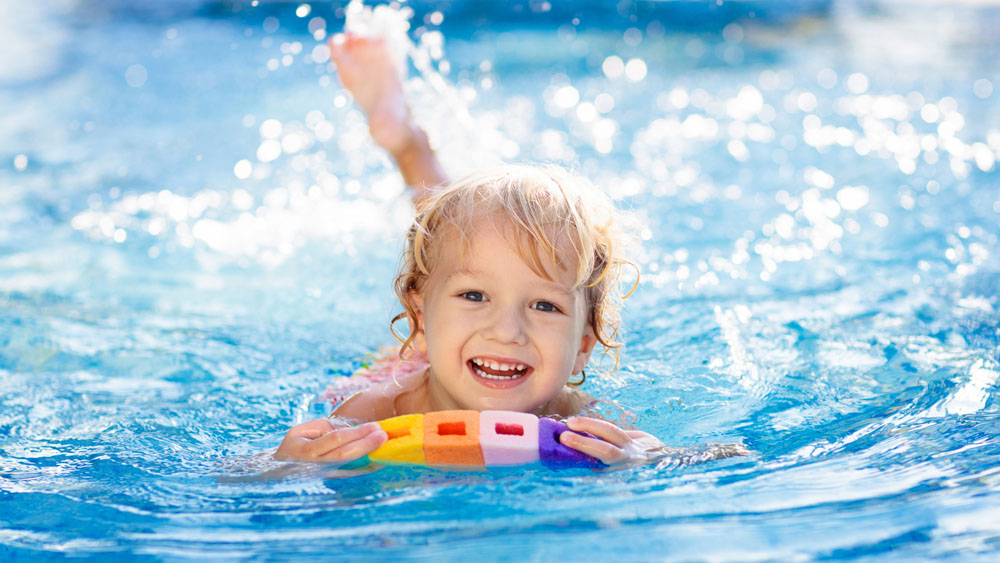Drowning is the second most common source of death in children ages 5 to 14, and the highest drowning rates occur in children ages 1 to 4, followed by children ages 5 to 9. There are an estimated 320, 000 annual drowning deaths worldwide.
As a babysitter, you play a crucial role in ensuring the safety and well-being of the children under your care, especially when it comes to water activities. Whether you’re supervising a pool playdate, taking the kids to the beach, or simply enjoying some water play at home, it’s important to prioritize water safety. Even when you are in the home, ensure the bathroom door is closed and toilet lids are down. Here are some essential tips to help you keep the children safe while having fun in and around water.
First Aid, CPR and Emergency Preparedness:
Acquire basic knowledge of first aid, including CPR. You can be prepared by taking a Babysitting Course that covers these topics. This course is fully online, so you can be certified within 5 hours!
@thebabysittingcourse ? Kids need constant supervision in the water. Drowning can occur in just 20 seconds! Follow these 3 steps: ✅ Step 1: Immediately remove the child from the water. If the child is unresponsive – take charge. If others are around, recruit their help. Instruct one person to call 911 and if available, send someone else to retrieve an AED (Automated External Defibrillator.) ✅ Step 2: Determine if the child is breathing. Tilt their head back to open their airway. Look for signs of normal effective breathing – is their chest rising? Do you feel any breath coming out of their mouth? Do you hear any breathing sounds? Do you see any sign of life? ✅ Step 3: If the child is not breathing, begin CPR immediately. Give 30 compressions followed by 2 breaths and repeat. If they begin to show signs of life, immediately roll them on their side, into the recovery position. Once you have rolled them on their side, check to ensure their airway is open and leaning forward. This position is meant to keep their airway safe and prevent them from choking on any vomit. Keep talking to them and provide constant reassurance. ? The Babysitting Course will take you through more in depth steps to provide CPR – it’s a skill that can save a life and all babysitters should be prepared to take action in an emergency! Link to course in bio 🙂 #CPR #drowningprevention #WaterSafety #Babysitting #pool ♬ original sound – The Babysitting Course
Be Prepared and Informed:
Before engaging in any water activities, familiarize yourself with the children’s swimming abilities, any specific water safety rules set by the parents, and emergency procedures. Ensure you have access to important contact numbers such as parents phone numbers and remember to call 911 for help.
Know the Location:
Familiarize yourself with the water environment, identifying potential hazards such as deep areas, slippery surfaces, or underwater obstacles. Ensure children understand the boundaries and rules for safe water play. Access to pool areas should be limited by self-latching gates on fences around the pool. Always be extra careful to ensure that doors from inside to outside are locked when you are babysitting younger kids who have a pool in their backyard. Be aware of first aid emergency equipment like life rings or reaching poles.
Constant Supervision:
Maintain vigilant supervision at all times. Never leave children unattended near water, even for a moment. Avoid distractions such as phone use or engaging in other tasks that may divert your attention away from the children. Actively engage with the children in the water, keeping them within arm’s reach and closely monitoring their activities.
Only allow the kids to swim if the parents have approved it and if there will be enough supervision to make sure everyone is safe in the water. There should be at least one adult for every two young children, and one adult for every infant. All children need to be supervised at all times.
Watch this video to see how quickly and silently a near-drowning or drowning can occur:
Avoiding Camouflage or Dark Colors:
While bright colors are recommended, it’s equally important to avoid bathing suits that blend in with the surrounding water or have dark hues. Camouflage patterns, dark blues, or white bathing suits can make it difficult for others to see a drowning child, especially in open water settings.
Colors like orange, yellow and pink will stand out the most under water. Take a look at the below comparison chart to see how different bathing suit colors appear at the bottom of a pool (source):
@scarnati.swim Just dont do it! Why think about which bathing suits for the splash pad? Just buy bright ones!! ☀️☀️ #selfrescue #selfrescueswimming #selfrescueswim #watersafety #drowningpreventionawareness #springhillisd ♬ original sound – Nikki Scarnati

Establish and Enforce Rules:
Set clear rules with children regarding water safety, including following instructions, no running near the pool, avoiding rough play, and respecting boundaries. Reinforce these rules consistently.
Sun Protection:
Protect the children from the sun’s harmful rays. Apply waterproof sunscreen with a high SPF before going outdoors and reapply it regularly. Provide them with hats, sunglasses, and protective clothing to minimize sun exposure.
Stay Hydrated:
Encourage children to drink plenty of water, even when they are in the water. Physical activity and sun exposure can lead to dehydration, so it’s crucial to keep them hydrated. Provide breaks for rest and rehydration during extended water play sessions.

Infants and Water:
Let’s start by first and foremost stating It’s NOT recommended that you take an infant swimming while babysitting! Infants need incredible attention near and in the water and NEVER can be left unattended anywhere near water. They are not able to swim yet and therefore incredible caution is always needed.
Conclusion:
As a babysitter, water safety is a big responsibility. By being prepared you can ensure a safe and enjoyable water experience for children. Remember, water safety is a shared responsibility, and your proactive approach can make a significant difference in keeping children safe while they have fun in and around water.
The Babysitting Course is a 100% online course that prepares teens to take on the responsibility of child care. We teach skills for life with an emphasis on first aid training and basic safety and preparedness. Recommended for ages 12-16+.






